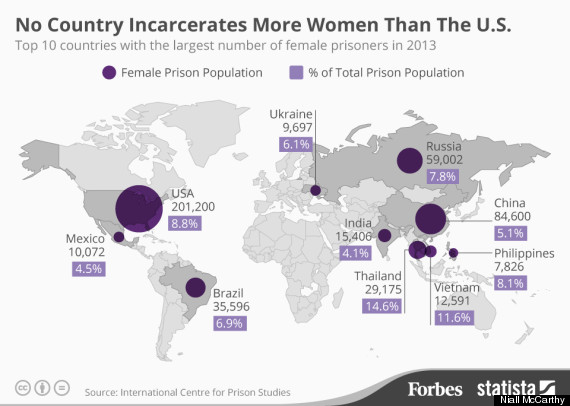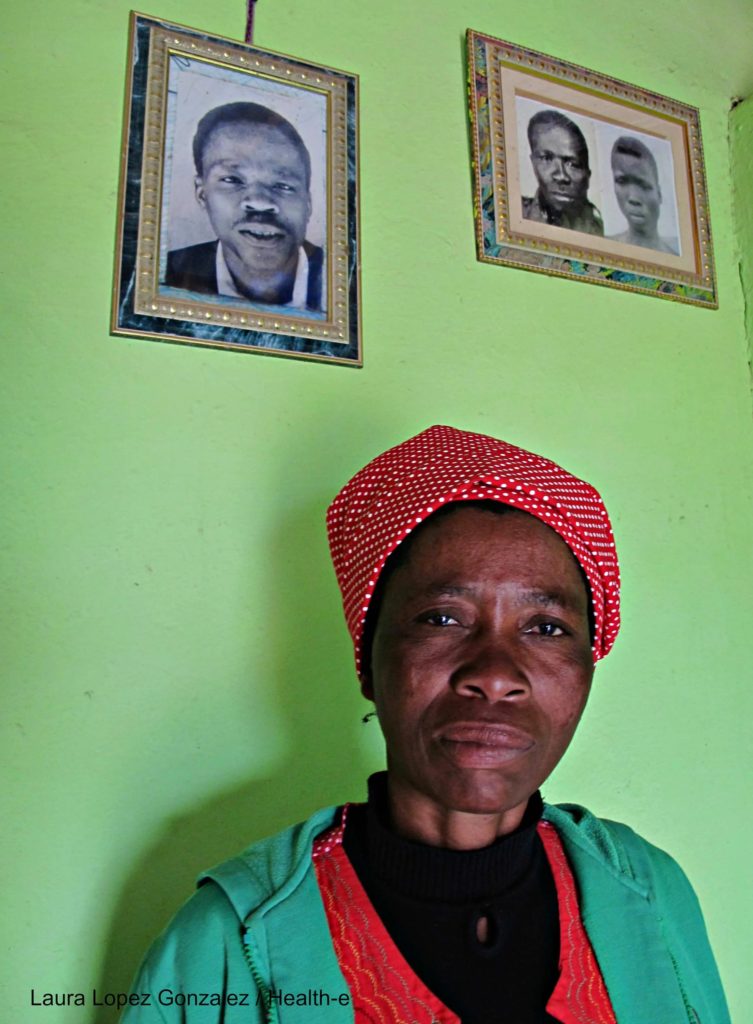
According to a recent infographic, from 1978 to 2012, the United States went from whitish pink to deep purple. These shades represent the number of prisoners under state or federal jurisdiction with a sentence of more than 1 year per 100,000 U.S. residents. At one end, whitish pink, the rate is 0 – 260 per 100,000. That was then. At the other end, the deep purple represents 770 – 900 per 100,000. That is now.
According to an ACLU report, Worse Than Second Class: Solitary Confinement of Women in the United States, released yesterday, “More than 200,000 women are locked in jails and prisons in the United States. These prisoners are routinely subjected to solitary confinement, spending at least 22 hours a day without human interaction for days, weeks, or months at a time. And yet, the solitary confinement of women is often overlooked.”
The report suggests that women suffer “unique harms and dangers”. These include the needs of pregnant women, of women living with past trauma, of women living with disabilities and illnesses, of mothers, of anyone living as a woman. The report highlights the experiences of Meghan, who was pregnant when placed in extended solitary; Melanie H., a rape survivor who at 15 years old was placed in extended solitary; a 73-year-old living with cancer placed in solitary for five weeks for complaining about the quality of medical care, and of Maria Benita Santamaria, a transgender woman prisoner.
The report recommends severe reduction of use of solitary confinement, and provision of alternative and decent services to women in need, which pretty much defines most women in prison. But it doesn’t address the contradiction of women’s imprisonment. Women are primarily in prison for status offenses, if they’re juveniles, and for the adult version of status offenses, minor and nonviolent and more often than not a function of poverty, mental illness or both. Women suffer more for committing nonviolent offenses than do men, and it’s all done in the name in of protecting women. Women are in prison for next to nothing and then end up disproportionately disappeared into, and deeply damaged by, solitary confinement.
Remember that when you read that the federal government is launching a clemency initiative. Closing down the prison house does not end the age of mass incarceration. Neither does releasing the prisoners, although both would be an improvement.
Mass incarceration did not target individuals; it targeted communities and, even more, neighborhoods. And now whole neighborhoods will receive women who have spent time, long time, deep in the hole. Who will pay for that? Who will pay for the suffering and the years lost? Who will pay for the consequences? Will the State expunge `criminal’ records, so that women might be able to apply for jobs with some modicum of hope, or for school loans, or for housing, or for public assistance?
Prison doesn’t work. Prison especially doesn’t work for women. But for 40 years, it’s worked `for America’. Who will pay to remove and replace the wounds and scars on the soul of the country? Who will pay that debt?
(Infographic Credit: Forbes)







